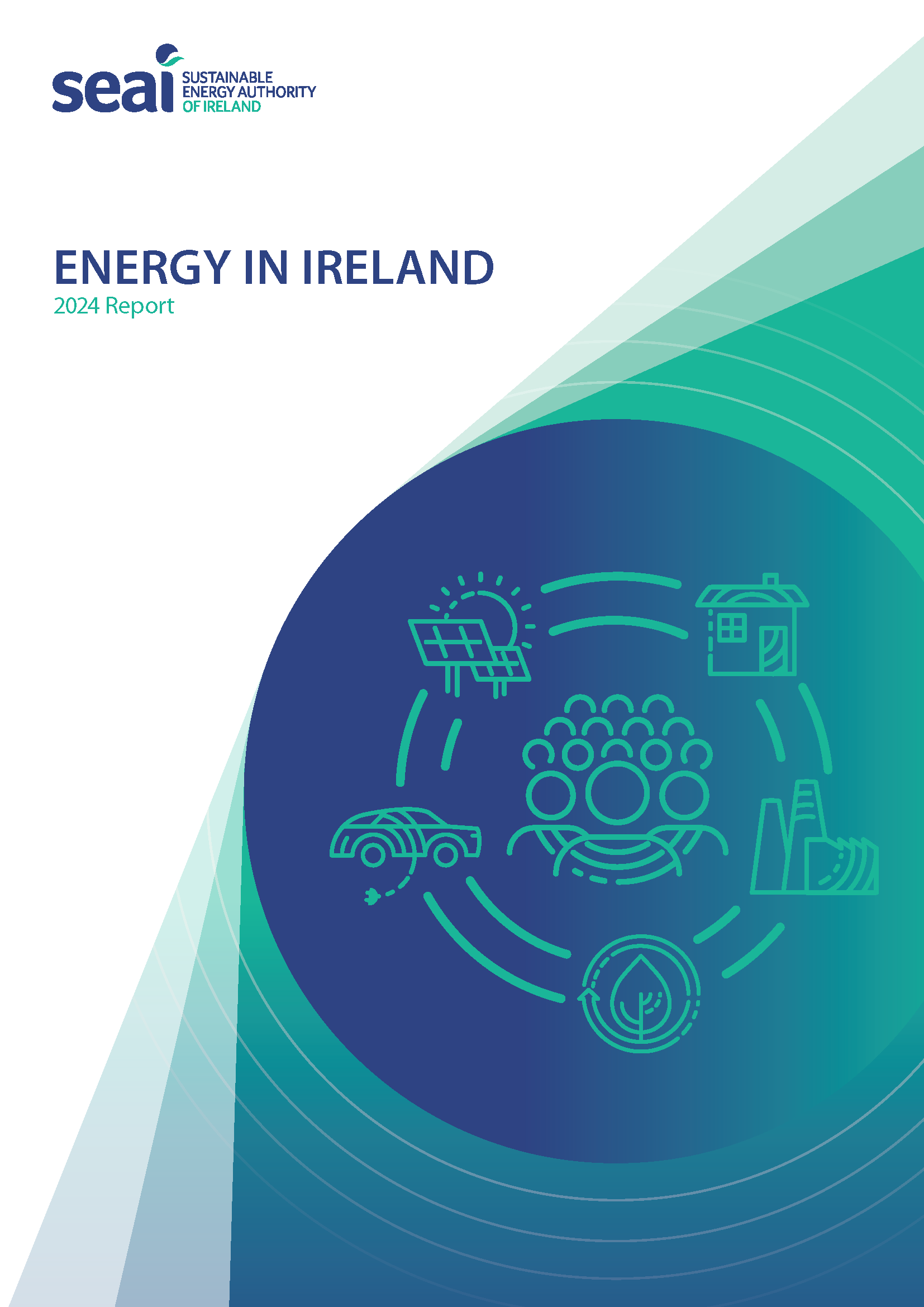Energy in Ireland
SEAI's annual publication presents the latest official statistics on energy use in Ireland. View our insights and download the full 2024 report.
Latest energy trends in Ireland
Our annual publication looks at trends in national energy use and at the underlying driving forces, such as the economy and weather, and more recently the impacts of high energy prices. It also examines greenhouse gas emissions from energy use, energy security, cost competitiveness, and our progress towards EU renewable energy targets.
The data provided in this report is a key strand in the evidence base that SEAI provides to support the transition to a carbon neutral society.
Ireland’s national energy-related emissions in 2023 were at their lowest level in over 30 years. Energy-related emissions in 2023 were 31.4 MtCO2eq, down 8.3% on 2022 levels, and lower even than those observed during the height of COVID impacts in 2020. Energy-related emissions fell by over 2.8 MtCO2eq in 2023 - the largest annual reduction observed in 12 years. Ireland’s national energy-related emissions have fallen for seven of the last ten years
We are at a critical period in our journey to a sustainable energy future. While we have succeeded in reducing emissions, our energy demand has continued to grow for a variety of reasons. Given the cumulative nature of emissions in the atmosphere, we are to be reminded that it’s not just the end goal of emission reductions by 2030 or 2050 that matter, but our emission results each-and-every year against science-based carbon budgets and sectoral ceilings. These are our non-negotiables.
Ireland's energy balance 2023
Energy-related Emissions
- Ireland’s national energy-related emissions in 2023 were at their lowest level in over 30 years.
- Energy-related emissions in 2023 were 31.4 MtCO2eq, down 8.3% on 2022-levels.
- Electricity accounted for a 24.1% of energy emissions, transport for 37.6% and heat for 38.3%.
- 2023 heat emissions were 12.0 MtCO2eq, the lowest on record, having fallen 3-years in a row.
- 2023 transport emissions were 11.8 MtCO2eq, 0.3% higher than in 2022.
- 2023 electricity emissions were 7.6 MtCO2eq, the lowest on record, down 22.0% on 2022 levels.
Renewable Energy
- 14.1% of Ireland’s primary energy was renewable in 2023 – the highest value to date.
- Ireland used 1.61 TWh more renewable energy in 2023 than in 2022.
- Over three-quarters of renewable energy used in 2023 came from wind, biodiesel, and biomass.
- In 2023, Ireland’s RES-Overall result was 15.3%, up from 13.1% in 2022.
- Ireland’s RES-Overall result is amongst the lowest in Europe, and below our 2020 16% baseline target.
Overall Energy Demand
- End-user energy demand in Ireland increased by 1.11 TWh in 2023, up 0.8% on 2022 levels.
- 140.8 TWh of energy was directly consumed by Irish end-users in 2023.
- 55.6% of all energy consumed in Ireland was oil products, mainly diesel, petrol, and heating oils.
- Electricity accounted for 22.4% of energy consumption in 2023.
- The transport sector is the largest consumer of energy, accounting for 43.4% of energy demand in 2023.
Transport Demand
- Demand for transport energy increased by 2.61 TWh in 2023, up 4.5% on 2022 levels.
- Energy demand for international aviation increased by 12.9% in 2023.
- Energy demand from private car use increased by 5.0% in 2023.
- Overall, 94.0% of Ireland’s transport energy came from fossil fuels in 2023.
- In 2023 biofuels accounted for 8.5% of energy in road diesel, and 4.2% of energy in road petrol.
Electricity Demand
- Electricity demand in Ireland rose by 1.24 TWh in 2023.
- Commercial services, which include data centres, accounted for 41.2% of electricity demand.
- The residential sector accounted for 25.6% of electricity demand in 2023.
- Data centres accounted for 20.1% of all electricity demand in 2023.
Electricity Supply
- 44.3% of Ireland’s gross electricity supply came from natural gas in 2023.
- Wind generation provided 33.7% of electricity supply in 2023.
- Ireland generated 11.7 TWh of renewable energy from wind generation – a new record.
- Net-imported electricity accounted for 9.5% of electricity supply in 2023.
Heat Demand
- Heat demand fell by 2.64 TWh in 2023, with reductions across all economic sectors.
- 90.2% of Ireland’s heat demand was satisfied using fossil fuels in 2023.
- Ireland’s use of renewable energy in heat demand has increased from 5.2% in 2013 to 8.0% in 2023.
- Ambient heat captured by heat-pumps accounted for 28.9% of all renewable heat.

Energy in Ireland Report
The full report presents the latest national data and trends on energy efficiency and renewable energy in Ireland. It also looks at how these energy trends relate to Government and EU renewable energy targets.
Download the report Download the spreadsheet of charts and data
Your feedback
We welcome your feedback and comments on this report. Please send your email to [email protected].
Statement from SEAI Regarding Revisions to Energy in Ireland 2023 Report
In mid-November 2024, suggestions were made in some media outlets that SEAI was subject to improper influence in revisions made to the Energy in Ireland 2023 report. SEAI wish to publicly state the full and factual position for the avoidance of doubt, and we do so now following the general election to avoid politicisation of the matter.